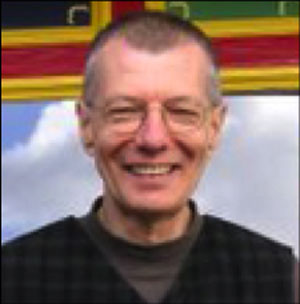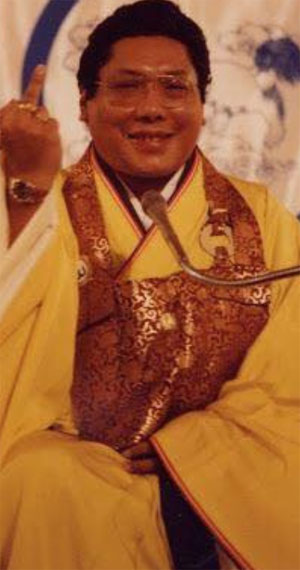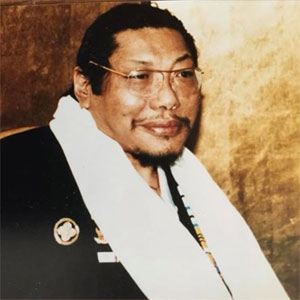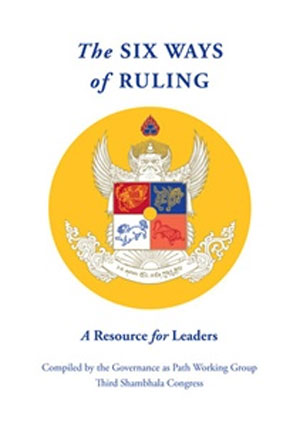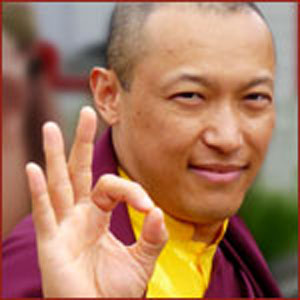by hakomiinstitute.com
Accessed: 6/29/19
NOTICE: THIS WORK MAY BE PROTECTED BY COPYRIGHT
YOU ARE REQUIRED TO READ THE COPYRIGHT NOTICE AT THIS LINK BEFORE YOU READ THE FOLLOWING WORK, THAT IS AVAILABLE SOLELY FOR PRIVATE STUDY, SCHOLARSHIP OR RESEARCH PURSUANT TO 17 U.S.C. SECTION 107 AND 108. IN THE EVENT THAT THE LIBRARY DETERMINES THAT UNLAWFUL COPYING OF THIS WORK HAS OCCURRED, THE LIBRARY HAS THE RIGHT TO BLOCK THE I.P. ADDRESS AT WHICH THE UNLAWFUL COPYING APPEARED TO HAVE OCCURRED. THANK YOU FOR RESPECTING THE RIGHTS OF COPYRIGHT OWNERS.
“Therapy is first about discovering. It’s about who you are and about what your deepest emotional attitudes are. It’s not just about who you think you are. It’s not opinion. It’s not something you can know with the intellect. It’s about who you are in the very heart of yourself. That’s the flavor of psychotherapy, discovering yourself, discovering your real attitudes toward the most important pieces of your life.”
—Ron Kurtz, Hakomi Founder.
Hakomi Mindful Somatic Psychotherapy was first created in the late 1970’s by the internationally renowned therapist and author, Ron Kurtz. In 1981, to fully develop the method and promote the teaching of Hakomi, Ron and a core group of therapists and educators founded the Hakomi Institute. Today, Hakomi Trainings and workshops are presented throughout the world, in North America, Europe, Japan, Latin America, Australia and New Zealand.
Integrating scientific, psychological, and spiritual sources, Hakomi has evolved into a complex and elegant form of psychotherapy that is highly effective with a wide range of populations. The method draws from general systems theory and modern body-centered therapies including Gestalt, Psychomotor, Feldenkrais, Focusing, Ericksonian Hypnosis, Neurolinguistic Programming, and the work of Wilhelm Reich and Alexander Lowen. Core concepts of gentleness, nonviolence, compassion, and mindfulness evolved from Buddhism and Taoism.
At its most basic level, Hakomi is the therapeutic expression of a specific set of Principles: Mindfulness, Nonviolence, Unity, Organicity and Mind-Body Integration; these tenets inform every aspect of the work. The first concern of Hakomi Trainings is that our students embody these Principles as a deep and consistent part of who they are and how they work. This means a heartfelt, long-term commitment to their own growth, both personal and professional. Our goal is to foster high quality, caring therapists who are as dedicated to their own self-awareness as they are to the understanding of others. We further support students in discovering their own style, creativity and unique application of the Hakomi Method.
“The most powerful thing the therapist does for us is provide a setting, a nourishing womb, in which our lives can unfold. Through the physical setting and, most important, the setting of his own being, he creates a place of safety; a trustworthy place where all life is befriended through an affirmation of faith in our wisdom and creativity.”
—Gregory Johanson, Ph.D., Hakomi Institute Co-Founder and Senior Trainer.
The Method
Hakomi helps people change “core material.”
Core material is composed of memories, images, beliefs, neural patterns and deeply held emotional dispositions. It shapes the styles, habits, behaviors, perceptions and attitudes that define us as individuals. Typically, it exerts its influence unconsciously, by organizing our responses to the major themes of life: safety, belonging, support, power, freedom, control, responsibility, love, appreciation, sexuality, spirituality, etc. Some of this material supports our being who we wish to be, while some of it, learned in response to acute and chronic stress, continues to limit us. Hakomi allows the client to distinguish between the two, and to willingly change material that restricts his or her wholeness.
Hakomi is an experiential psychotherapy:
Present, felt experience is used as an access route to core material; this unconscious material is elicited and surfaces experientially; and changes are integrated into the client’s immediate experience.
Hakomi is a body-centered, somatic psychotherapy:
the body serves as a resource that reflects and stores formative memories and the core beliefs they have generated, and also provides significant access routes to core material.
The Hakomi Method follows a general outline: First, we establish an ever-present, attitude of gentle acceptance and care known as loving presence. This maximizes safety, respect and the cooperation of the unconscious. With a good working relationship established, we then help the client focus on and learn how core material shapes his or her experience. To permit this study, we establish and use a distinct state of consciousness called Mindfulness. Mindfulness is characterized by relaxed volition, a gentle and sustained inward focus of attention, heightened sensitivity, and the ability to notice and name the contents of consciousness. Its roots derive from Eastern meditation practice. Hakomi has pioneered the use of active, or dynamic mindfulness in psychotherapy: instead of using mindfulness meditation as simply an adjunct to therapy, virtually the entire Hakomi process in conducted in mindfulness. This facilitates Hakomi techniques in accessing unconscious material quite rapidly, but safely.
The heart of the Method works with the client’s present, felt experience, as it is presented spontaneously, or deliberately and gently evoked by having them experiment with habitual tension or movement patterns known as “indicators.” These emotional/cognitive patterns automatically keep deeper experience out of present awareness. The results are processed through different state-specific methods, including:
• We work with strong emotions and bound energy, safely releasing them, and finding nourishment in that release
• We work with the inner child and other specific self-states, often in the context of vividly re-experienced memories, frequently providing the “missing experience” for the child
• We process core beliefs in mindfulness, not as intellectual problem-solving, but as direct dialogue with the unconscious
The basic method, then, is this:
• To establish a relationship in which it is safe for the client to become self-aware
• To use the Hakomi methodology to evoke experiences that lead to the discovery of organizing core material
• To seek healing changes in the core material
All is in support of this primary process. Once discovered in this experiential manner, core material can be examined, processed, and transformed. Transformation begins when awareness is turned mindfully toward felt, present experience; unconscious material unfolds into consciousness; barriers are attended to; and new experiences are integrated that allow for the reorganization of core beliefs. These, in turn, allow for a greater range of mental, physical, and emotional coherence and behavior.
Finally, we help the client to integrate these new beliefs, modes and choices into everyday life. It is here –- in the ability to transform new possibilities discovered in the office into on-going actualities of daily living -– that real change happens.
Hakomi is effective and appropriate in many therapeutic situations, with individuals, couples, families, and groups. It integrates well with a variety of psychotherapeutic, counseling and healing modalities, and is successfully used by counselors, psychotherapists, social workers, pastoral counselors, expressive therapists, bodyworkers, group therapists, crisis counselors, and many other practitioners. It is effective for both brief and long-term therapy.


